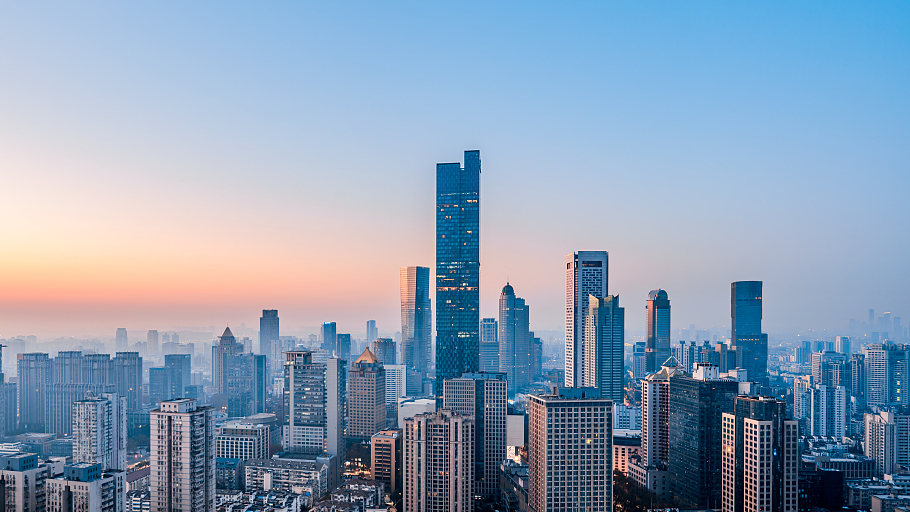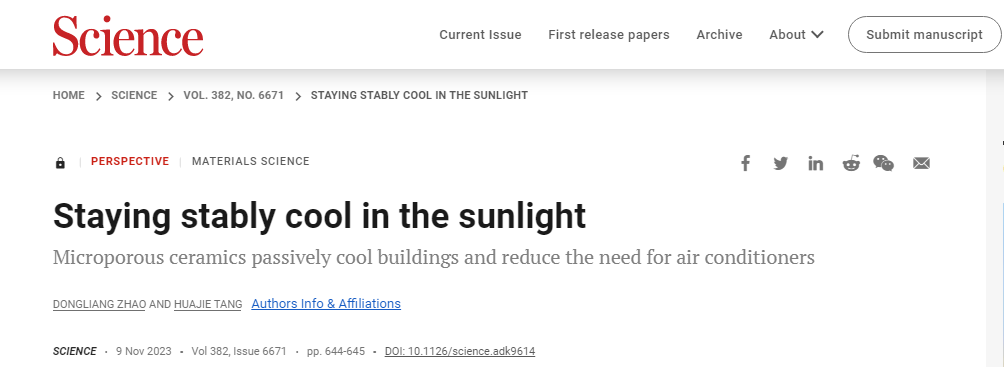
A view of the Nanjing City, east China's Jiangsu Province. /CFP
A view of the Nanjing City, east China's Jiangsu Province. /CFP
A group of Chinese scientists have found a new type of ceramic materials to realize passive cooling of buildings and save energy consumed by air conditioners, according to the recent issue of the journal Science.
The electricity used by cooling systems accounts for about 10 percent of global electricity consumption. Therefore, developing new cooling technologies for saving energy and promoting carbon neutrality is crucial.
Radiative sky cooling is a passive cooling technology that emits heat to outer space through the atmospheric window from 8 to 13 micrometers. If the radiated heat is greater than the solar energy absorbed, then daytime radiative cooling is achieved without any energy input.

A screenshot of the study published in the journal Science on November 9, 2023.
A screenshot of the study published in the journal Science on November 9, 2023.
The research team, led by Zhao Dongliang at the School of Energy and Environment at China's Southeast University, analyzed the optical characteristics of different materials in the solar and infrared bands based on their crystal structure.
They put forward that ceramics mainly composed of alumina and silica with certain structural designs could achieve radiative sky cooling of buildings by a high sunlight reflection rate and high emissions of infrared radiation. Moreover, such ceramics are durable, thermostable and water-resistant.
The study also introduced examples of such ceramic radiative cooling materials. After using such materials on the building roof, the energy consumption of air conditioners inside the building can be reduced by 26.8 percent compared with buildings using ordinary white paint.
The study said further research will be carried out to realize massive production of such materials at a low cost.
Source(s): Xinhua News Agency



